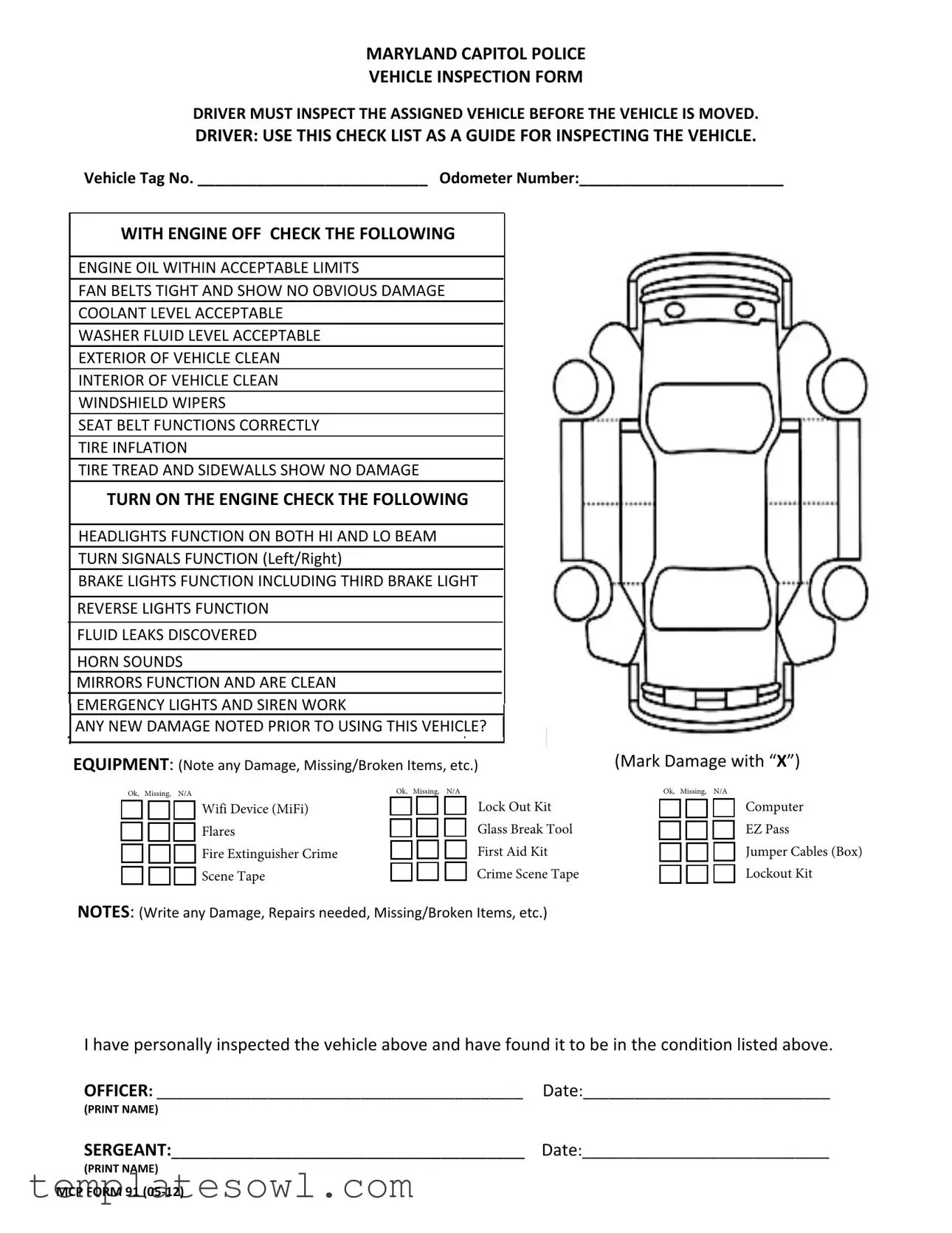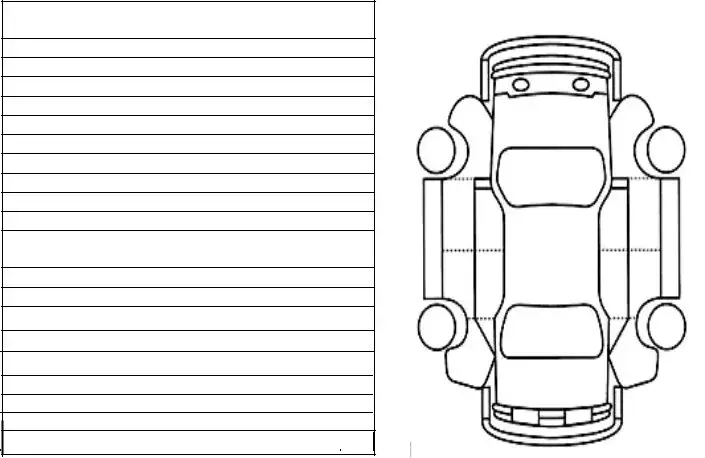What is the purpose of the Police Vehicle Checklist?
The Police Vehicle Checklist is a tool to ensure that each assigned vehicle is properly inspected before use. It helps officers identify any potential issues, ensuring safety and reliability while performing duties.
Who is responsible for completing the checklist?
Each driver assigned to a vehicle must complete the checklist. This responsibility ensures that the vehicle is inspected thoroughly before it is moved or used for any official purposes.
What should be checked when the engine is off?
When the engine is off, drivers should inspect the engine oil levels, fan belts, coolant levels, and washer fluid levels. Additionally, the exterior and interior cleanliness, functionality of seat belts, tire inflation, and tire tread integrity should also be assessed.
What items need to be checked while the engine is running?
With the engine running, ensure that headlights function properly on both high and low beams, turn signals work correctly, and brake lights, including the third brake light, are operational. Reverse lights and horn functionality should also be tested, along with checking for any fluid leaks.
What should be documented regarding equipment?
Note any damage, missing items, or broken equipment. This includes checking items like the WiFi device, lock-out kit, flares, glass break tool, fire extinguisher, first aid kit, and scene tape. Clearly mark each item as ‘Ok,’ ‘Missing,’ or ‘N/A’.
How do I report any damage found during the inspection?
Any damage discovered during the inspection should be noted in the “Notes” section of the checklist. Mark damaged areas with an “X” for clarity and make sure to include any repairs needed or items that are missing or broken.
What happens if I find new damage on the vehicle?
If new damage is found prior to using the vehicle, it must be documented in the checklist. It’s crucial to report this immediately to ensure that the vehicle is safe for use and to prevent any future liabilities.
How often do I need to perform this inspection?
The inspection must be completed each time a driver is assigned a vehicle or prior to moving that vehicle. This ensures ongoing safety and operational efficiency.
What should I do if I notice a problem during the inspection?
If you notice any problems, report them according to department protocol. This might involve notifying a supervisor or arranging for repairs before the vehicle is used. It’s important to address potential issues right away to maintain the vehicle’s operability.
Where should I document my findings?
All findings should be documented on the Police Vehicle Checklist form itself. Ensure that both the officer’s and sergeant’s names are printed along with the date, confirming that the inspection is complete and all findings have been noted.

